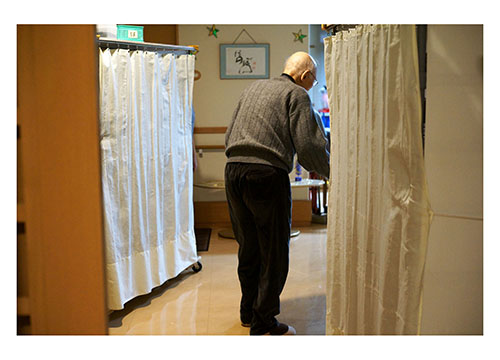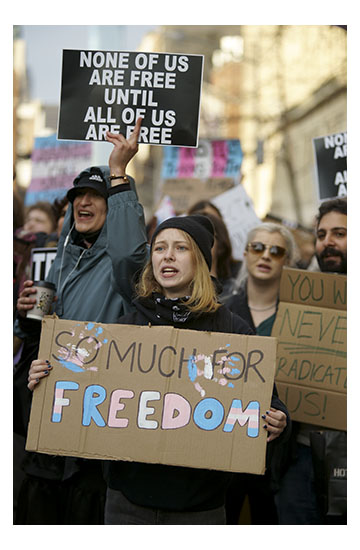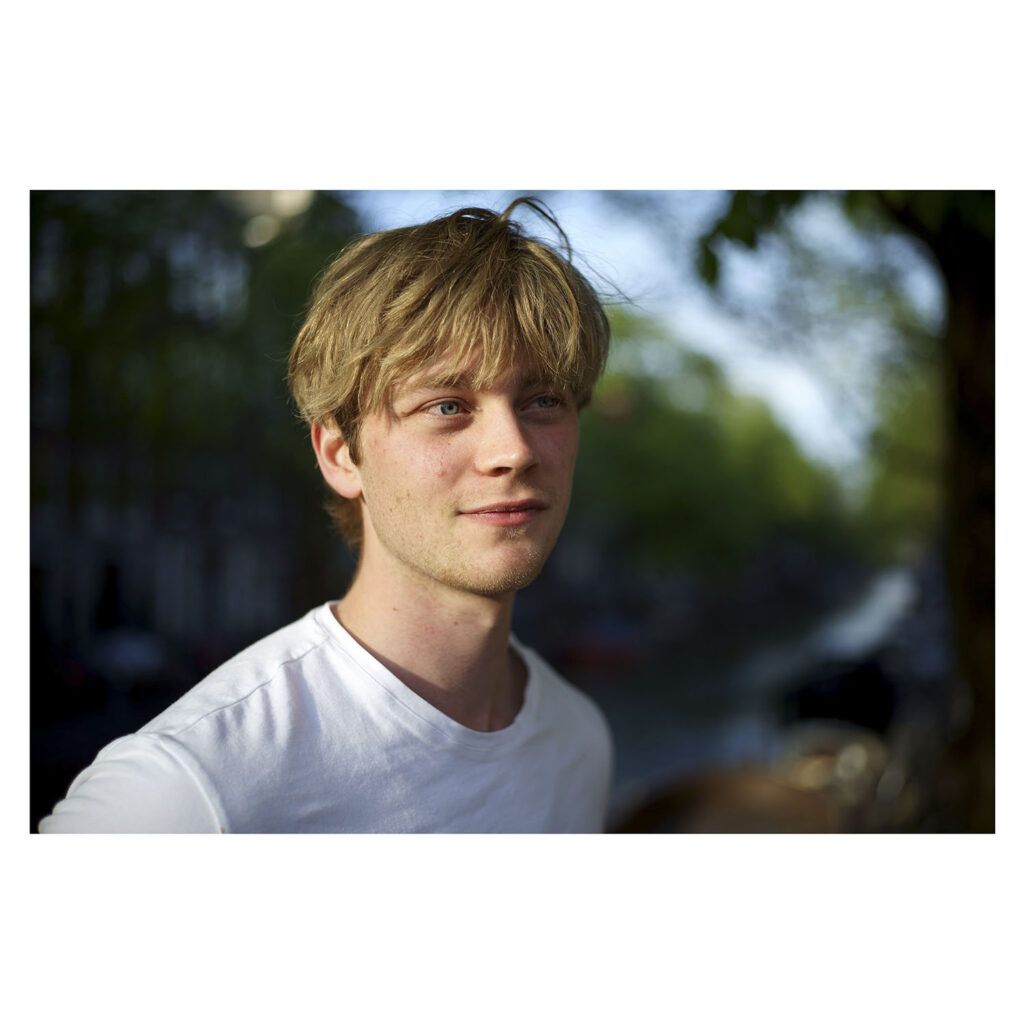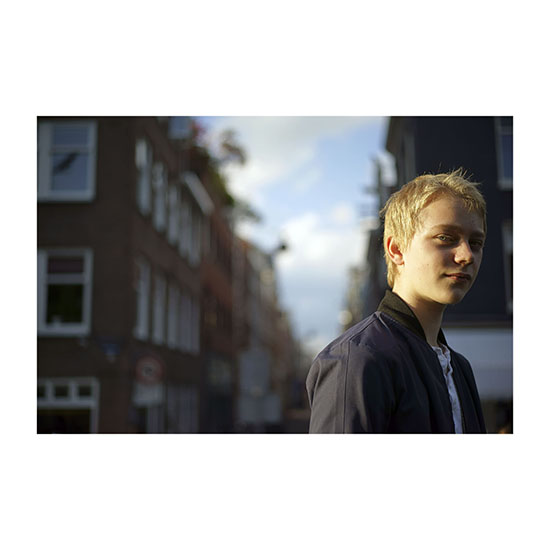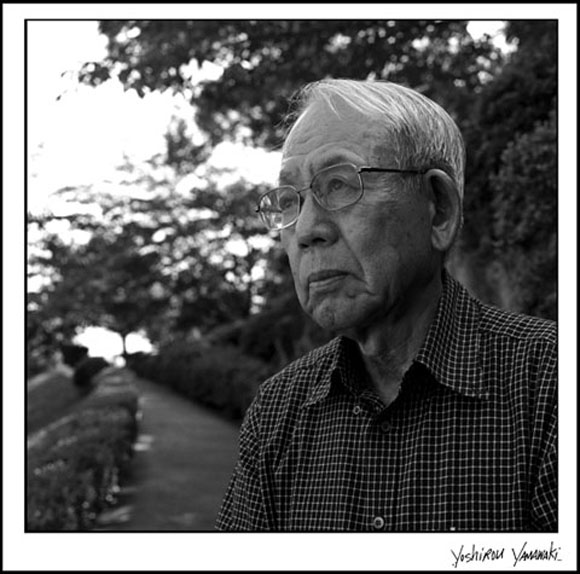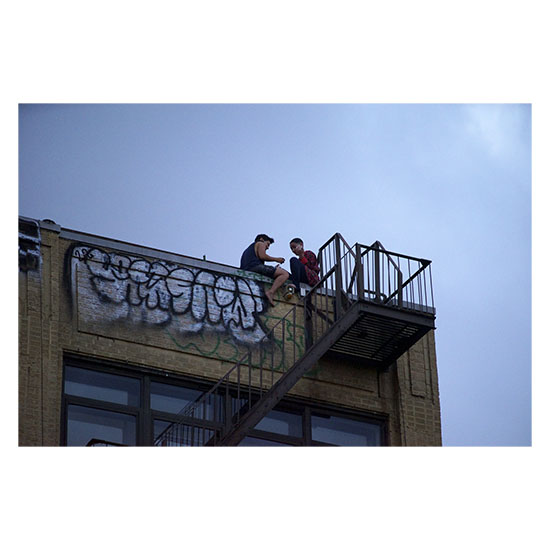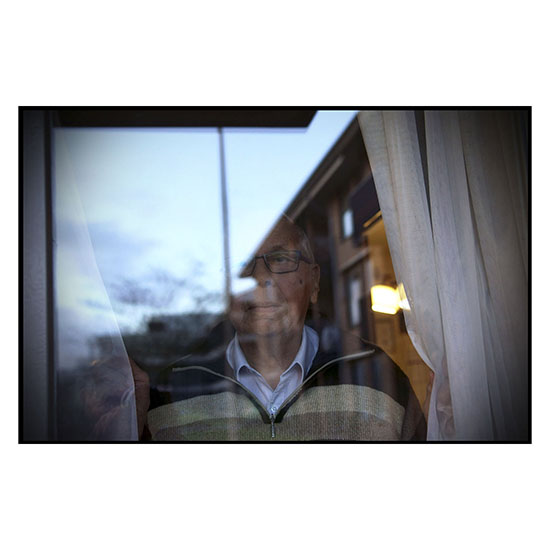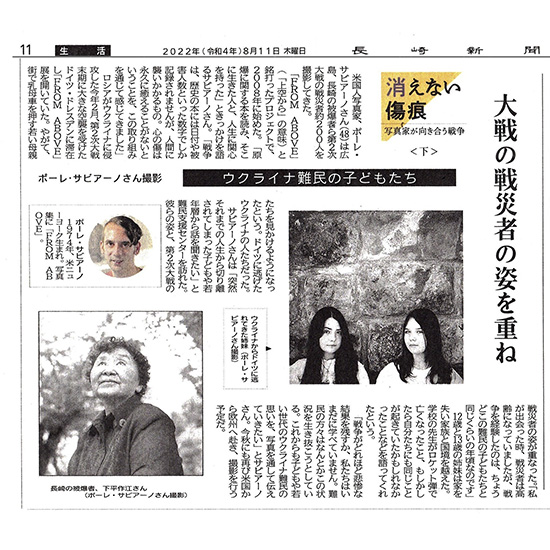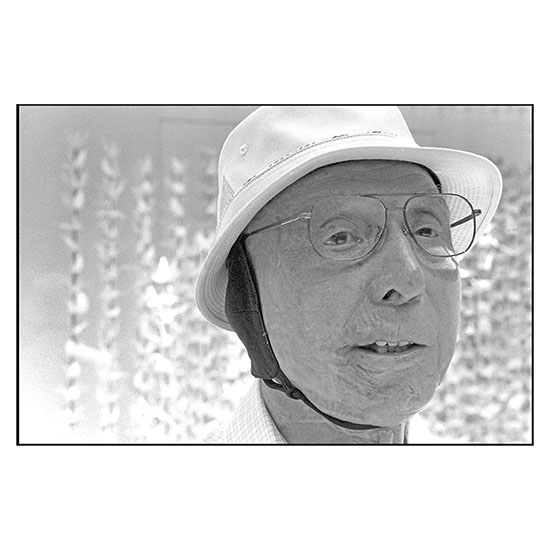I received the sad news that Mr. Yoshitoshi Fukahori passed away from pneumonia on May 21st. He was 93 years old. The first time I met Mr. Fukahori was in 2010 during my second trip to Nagasaki. He was fourteen years old and 3.5km away from the hypocenter when the atomic bomb was detonated.
Hours after the bomb was dropped, he and a friend went to retrieve the bodies of his older sister and uncle that were trapped underneath the rubble of their home located close to the hypocenter. They didn’t reach the house until the next day because the fire and debris made it impossible to get to. His aunt’s body was never found. “My sister didn’t die instantly. I regretted not coming to help her the day before. That memory still hurts me. On August 12th, I went back to Nagasaki with my mother to cremate my sister. My mother never looked at the fire. She stood still, staring at the ground, praying. That was the most difficult sight.”
On my second trip to Nagasaki, I asked Ayumi if I could meet Mr. Fukahori. I read an article that after the war, Mr. Fukahori started speaking about his experiences. But he believed words would not be enough, and he established the Committee for Research of Photographs and Materials of the Atomic Bombing in 1979. He collected more than 3,000 photographs taken of the bomb’s aftermath. Many of the photos depict similarly harrowing scenes to those Mr. Fukahori witnessed. I was interested because he wanted to tell the story through photographs. Most hibakusha use their words or paint and pictures to describe their experiences. Mr. Fukahori’s collection of photographs hit me harder because it is a snapshot of reality. No imagination was needed, and the brutality was right there in the photograph.
I visited Mr. Fukahori for the last time in December 2018. He had moved into a home for the elderly, but he was still sharp and affable. He spent an hour talking to us and joking how the staff at the elderly home had him on a schedule to exercise. This the last frame I photographed of him when he walked Ayumi and me to the elevator. I photographed from the elevator as he disappeared behind the curtain.
